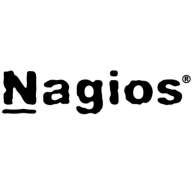

Nagios XI and VMware vCenter are prominent solutions in IT monitoring and management. Nagios XI shines with its customizable monitoring capabilities, whereas VMware vCenter stands out for its robust virtualization management but comes at a higher cost.
Features: Nagios XI offers comprehensive monitoring, alerting, and reporting with notable flexibility and integration capabilities. VMware vCenter provides advanced virtualization management, resource optimization, and extensive automation tools.
Room for Improvement: Nagios XI needs a more intuitive setup process, better scalability, and improved user interface. VMware vCenter could benefit from better integration with non-VMware products, smoother update management, and enhanced user interface customization.
Ease of Deployment and Customer Service: Nagios XI has a steep learning curve during deployment and requires significant configuration effort, with prompt but less effective customer service without premium support. VMware vCenter offers streamlined deployment in VMware environments and robust customer support, albeit at a higher cost.
Pricing and ROI: Nagios XI is praised for its cost-effectiveness and better ROI for small to medium-sized enterprises. VMware vCenter, although more expensive, is considered worth the investment for large enterprises due to its advanced feature set and superior performance metrics.
The technical support is good.
If the user interface isn’t presenting data well, it becomes difficult to manage when scaling.
The scalability is good in vCenter.
It is very stable.
Many tools have poor user interfaces, making them hard to manage and navigate.
The GUI could be improved. It's a bit too basic.
Better redundancy options can be achieved by using multiple vCenter machines.
The protocol interface or web page is not easy to use.
We are using the free, open-source version.
The pricing for the Nagios XI product is good and better than other solutions.
Nagios XI simplifies our setup and reduces the time spent configuring monitoring tools.
The alerting system is very effective.
High availability is employed so if an ESXi server is down, the VM is supported on another ESXi on other servers.
In vCenter, I can easily manage storage and move it from one server to another, which is beneficial for the environment.


Nagios XI provides monitoring of all mission-critical infrastructure components, including applications, services, operating systems, network protocols, systems metrics, and network infrastructure. Third-party add-ons provide tools for monitoring virtually all in-house and external applications, services, and systems.
Nagios XI uses a powerful Core 4 monitoring engine that provides users with the highest levels of server monitoring performance. This high degree of performance enables nearly limitless scalability and monitoring powers.
With Nagios XI, stakeholders can check up on their infrastructure status using the role-based web interface. Sophisticated dashboards enable access to monitoring information and third-party data. Administrators can easily set up permissions so users can only access the infrastructure they are authorized to view.
Nagios XI Benefits and Features
Some of the benefits and top features of using Nagios XI include:
Reviews from Real Users
Nagios XI stands out among its competitors for a number of reasons. Several major ones are its integration options and monitoring abilities, as well as its alerting features.
David P., a senior DevOps engineer at EML Payments Ltd, writes, “We use Nagios as a network discovery tool. We use Nagios to maintain our uptime statistics and to monitor our services. It has allowed us to be much more sophisticated in our monitoring and alerting.”
An IT-OSS manager at a comms service provider notes, “Nagios XI has a custom API feature, and we can expose custom APIs for our integration. This is a great feature.”
VMware vCenter is essential for managing virtual machines, deploying systems for customers, and centralizing ESXi servers' management. It aids in monitoring hosts, handling backups, recovering data, and virtualizing compute resources.
Organizations leverage VMware vCenter to oversee virtual infrastructure, automate administrative tasks, and provide self-service portals. It simplifies the management of IT environments by offering features like host profiles, high availability, and cluster configuration. Other notable features include scalability, resource management, performance monitoring, cloning, snapshots, DRS, LACP, and lifecycle management. VMware vCenter ensures continuous system availability, benefiting sectors like healthcare through efficient server management and process automation. The platform's alerting mechanisms, backup and restore functionalities, and elastic resource allocation enhance operational efficiency.
What are the key features of VMware vCenter?Healthcare organizations use VMware vCenter to ensure uninterrupted access to critical applications and patient data. It helps manage large volumes of virtual servers, providing necessary performance and reliability. This platform's automation and monitoring capabilities are crucial for maintaining efficient IT operations and supporting healthcare needs.
We monitor all Server Monitoring reviews to prevent fraudulent reviews and keep review quality high. We do not post reviews by company employees or direct competitors. We validate each review for authenticity via cross-reference with LinkedIn, and personal follow-up with the reviewer when necessary.